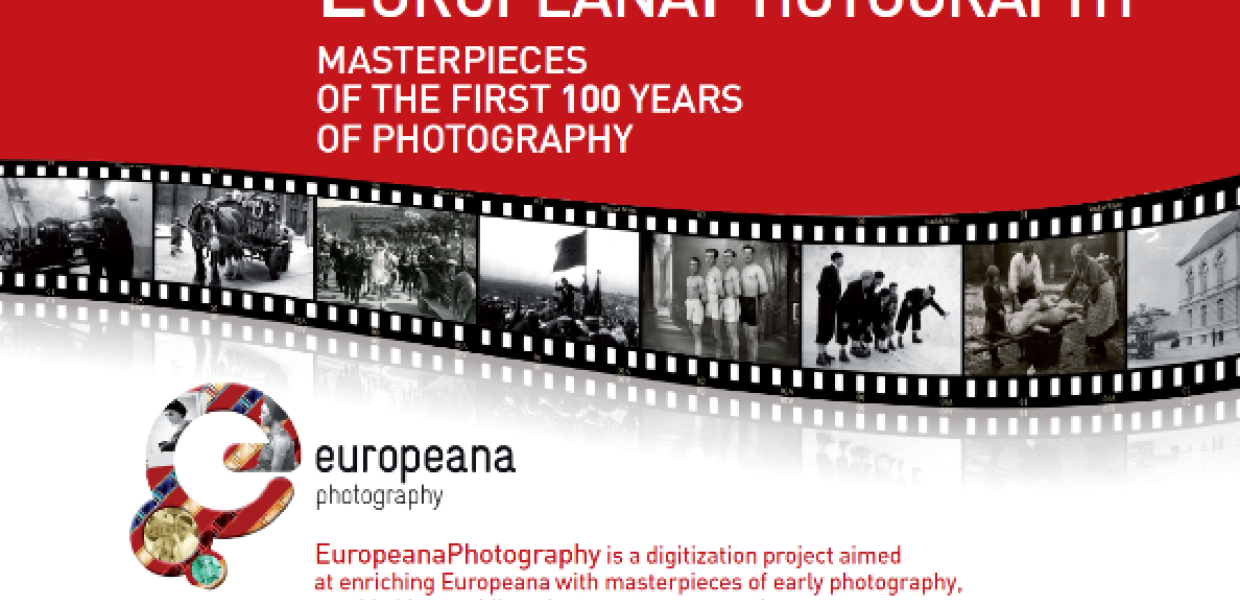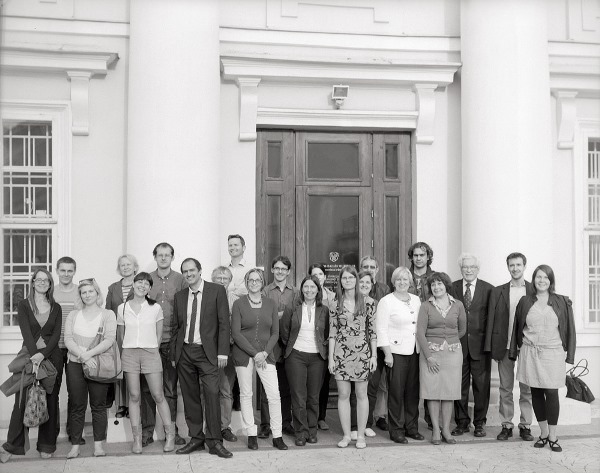A snapshot of EuropeanaPhotography

EuropeanaPhotography is a digitisation project playing a key role in ensuring that digital content related to early photography is accessible in Europeana.
At present, Europeana has an impressive number of images mostly representing cultural objects while photographic images, the early ones in particular, are underrepresented. EuropeanaPhotography is filling this gap by providing the finest examples of 100 years of photography from 1839, with the first images from Fox Talbot and Daguerre, to the beginning of the Second World War (1939).

The project runs for 36 months from 1 February 2012 to 31 January 2015. The project has now passed its midway point and to date has concentrated on content selection, digitisation and indexing. The next big milestone is to deliver more than 100,000 images with associated metadata to Europeana by the end of January 2014.

Armed Civil Guard in the street preventing a public transport strike (Plaça Espanya, Barcelona), Spain, 1933, by Brangulí, © ANC
By the end of the project, it is hoped that half a million photographs will have been digitised and added to Europeana. All metadata describing the images will be translated into the 11 languages spoken among the partner countries; this enhances the visibility of the photographic collections supplied by the content providers. The content selection is done with the highest curatorial and management standards. Images will illustrate the history, people, and landscapes of European life in the 19th and 20th centuries, focusing on:
- Places: see the world as cities rapidly transformed in the 19th and 20th centuries and where time stands still in the records of geographical exploration.
- People: the royal, the common, the famous, preserved in all aspects of life with details that had never seemed so real before photography.
- Events: political, social, and conflict. Photography is now the key medium for communication.
- Trends and movements: industrial revolution and invention, women’s emancipation and social change, artistic movements are all captured before, during and immediately after.
To support the consortium and to develop a safe and valuable environment for both public and private bodies, the project foresees very strong functions related to IPR issues and sustainability. Within the project, moreover, the commercial benefits of working with Europeana will be highlighted and clarified, in order to attract new content providers including those from the private sector.

British racing driver John Cobb in his Railton Special racing-car. He achieved a new speed record (563,58 km/h) at the Bonneville Salt Flats (USA) on September 5th 1938. London (Great Britain), July, 8th 1938, © IMAGNO/Austrian Archives (S)
The project's most recent plenary meeting took place on 9-10 September in Vilnius, Lithuania. The meeting was the occasion for partners to meet and discuss current hot topics that affect progression towards the project's second year objectives. The intermediate objective is to deliver a huge number of metadata records to Europeana, in order to publish a first batch of images that bear witness to the history of Europe and the art of photography in the period 1839-1939. To achieve this by early 2014, EuropeanaPhotography content providers are working closely to the technical deadlines.

The EuropeanaPhotography partners in Vilnius, September 2013, photo by Vaidotas Aukštaitis
The Vilnius meeting was also an opportunity for partners to attend a training session on the use of the EuropeanaPhotography MINT tool and the integrated multilingual vocabulary. Another strand of discussion was on the project's communication strategy and an exciting final event - a travelling exhibition to showcase recent history, art and photographic techniques, using masterpieces of photography from all over Europe, carefully selected to amaze the public.
Read more about the EuropeanaPhotography Plenary in Vilnius.
The next calendar date for EuropeanaPhotography partners and followers, professionals and researchers is 14-15 November when a focused workshop about IPR will be held in Paris.
For more information on the project, go to www.europeana-photography.eu and follow @EurPhoto on Twitter.
